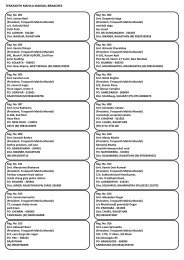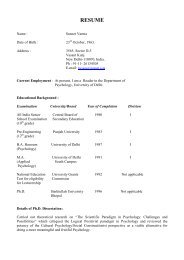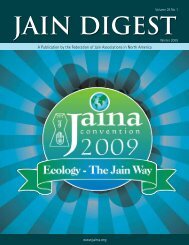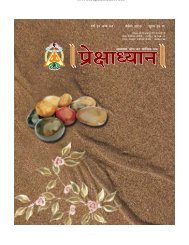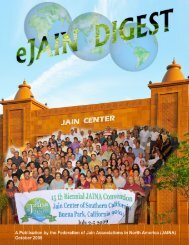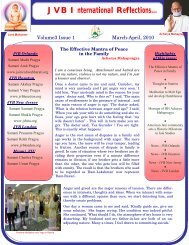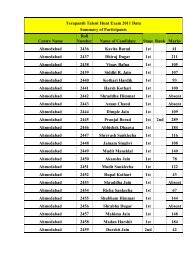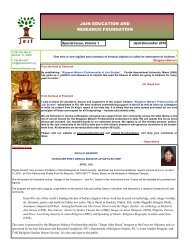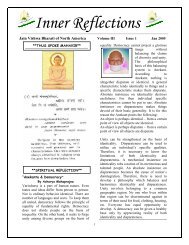Nature & Animals….. - HereNow4U.net
Nature & Animals….. - HereNow4U.net
Nature & Animals….. - HereNow4U.net
Create successful ePaper yourself
Turn your PDF publications into a flip-book with our unique Google optimized e-Paper software.
Animal Crusaders • Commemorative Issue • October 2010Minds of animals-CowIt’s Time (magazine)to Respect CowsAnimal minds made big news thismonth with Time magazinededicating its cover story to thetopic. “Inside the minds ofanimals,” by Jeffrey Kluger,provides an engaging glimpseinto some of the exciting recentdiscoveries in animal cognition.That title is an improvement overthat of a February 2006 ScientificAmerican article which askedmeekly, “Do Animals HaveFeelings?” as if there shouldremain any doubt about that.Kluger appears to have had anepiphany when he contrasts howsentient animals really are to theindefensible way humans havetreated and continue to treatthem, especially farmed animals.He emphasizes that theboundaries separating humanand non-human animals aredisintegrating. Time magazine,through him, has taken a boldpublic step in saying that “wecould surely eat less meat.” I hopethis generates considerable angstamong its readers and advertisersalike.Kluger repeats the commonprejudice that herd animalsexhibit little intelligence.Intelligence aligns poorly withsentience, so even if deer andhorses and giraffes were lesssmart than other creatures, itwouldn’t follow that they cansuffer less or feel pain less acutely.Further into Kluger’s article, theHarvard University ethologistMarc Hauser is quoted as sayingthat “animals have a myopicintelligence; they neverexperience the aha moment thata 2-year-old child gets.” While onecan sympathize with Hauser forthe turmoil currently surroundinghis research methods, I can’tsympathize with a statement likethat. Tellingly, a study on herdanimals puts the lie to bothKluger’s claim of their lack ofintelligence and Hauser’s claim ofhuman uniqueness. A 2004Cambridge University experimentshowed that young heifers exhibitbehavioral expressions ofexcitement when they solve aproblem. At critical points in theirlearning curve in a task thatrequired pressing their noseagainst a panel to open a gate foraccess to food, the heifers showedbehavioral signs of excitement(jumping, bucking, or kicking), andthe animals’ heart rates rose. Asecond group of heifers whoseaccess to food was providedindependently of their panelpresses showed no suchbehaviors. This study suggeststhat cows—and probably manyother animals—can have “eureka”moments, taking pleasure in theirown learning achievements.Pressing a panel to get food maynot seem like such an astonishingbovine act to us now, but it wasn’tlong ago when scientists gaugedape smarts by comparable feats.Perhaps it’s time to form acounterpart to the Great ApeTrust that focuses on bovineconsciousness and intelligence.After all, corvids (crows, jays,ravens, magpies, etc.) haveleapfrogged social carnivores inKluger’s smartness continuum.Who would have expectedbirdbrains to do that?By expanding our awareness ofanimals’ feelings, we are graduallybeing forced to acknowledge thata new relationship to them isneeded. Lawmakers in theSpanish region of Cataloniarecognize that. In July they votedto ban bullfighting. Followingheated debate, the 135-seatlegislature ruled 68 to 55 (nineabstentions) for the ban. If cattlecould read headlines, there wouldhave been some more jumpingin the air that day. Olé!~ Jonathan Balcombe, PhDIf a man aspires towardsa righteous life,his first act of abstinence isfrom injury to animals.Albert Einstein19



